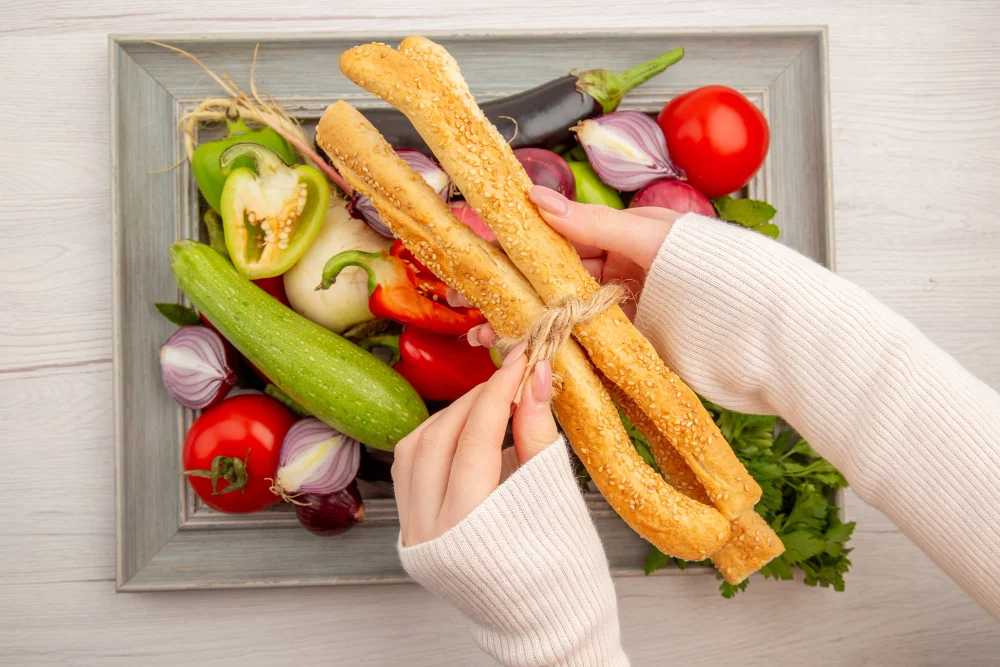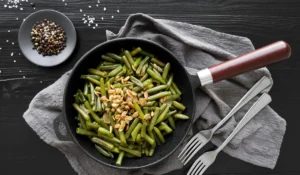If you’ve always dreamed of making authentic French bread at home, this easy baguette recipe is perfect for you. With simple ingredients and a step-by-step approach, even beginners can bake a crispy, golden baguette. This recipe balances taste, texture, and simplicity, so you can enjoy fresh bread without visiting a bakery. By following this guide, you’ll learn techniques to create a soft inside and a crunchy crust that’s classic to French baguettes.
Baguettes are versatile and can be enjoyed in many ways, from sandwiches to pairing with soups or just with butter. This guide is designed to be beginner-friendly and optimized to help you create bakery-quality bread in your kitchen. By the end of this article, you’ll not only know how to bake a baguette but also how to perfect its flavour and presentation.
What is a Baguette?
A baguette is a long, thin loaf of French bread known for its crispy exterior and soft, airy interior. The word “baguette” literally means “wand” or “stick” in French, highlighting its characteristic long shape. Traditionally, baguettes are made from simple ingredients: flour, water, yeast, and salt, yet mastering the balance of crust and crumb can be an art.
Baguettes are often enjoyed fresh and warm. Their soft interior makes them perfect for sandwiches, while the crust provides a satisfying crunch when eaten alone or dipped into sauces. This bread is a staple in French cuisine and has become popular worldwide due to its simplicity and elegance.
Ingredients for an Easy Baguette Recipe
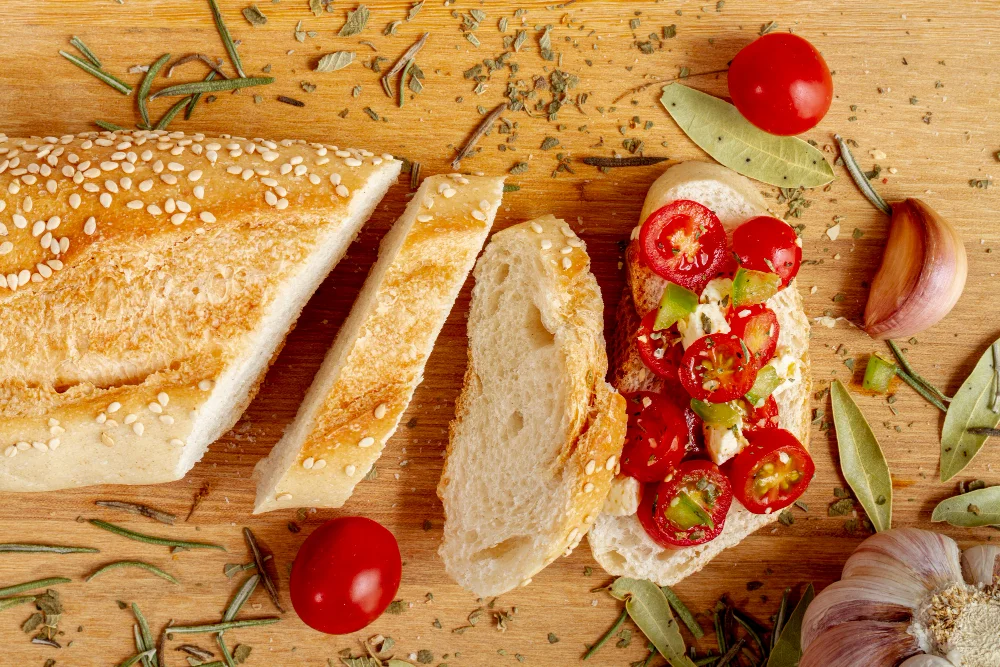
Making a classic baguette at home requires only a few simple ingredients, yet these few items are all you need to create a delicious, bakery-quality loaf. The simplicity of the ingredients allows the natural flavours of the bread to shine, while giving you control over quality and freshness. Using high-quality bread flour, fresh yeast, and the right amount of salt ensures a perfect balance of flavour, texture, and structure in every loaf.
Essential Ingredients for an Easy Baguette Recipe
-
6 cups of bread flour
-
3 cups of lukewarm water
-
2 teaspoons of active dry yeast
-
2 teaspoons of salt
Choosing quality ingredients is essential for the perfect baguette. Bread flour is recommended because it contains a higher protein content, which helps form the chewy texture inside. The water should be warm, around 100°F (38°C), to activate the yeast properly without killing it.
Step-by-Step Easy Baguette Recipe
1. Activate the Yeast
Begin by dissolving the yeast in lukewarm water. Let it sit for about 5 minutes until it becomes frothy. This ensures the yeast is alive and ready to leaven your dough properly.
Active yeast is critical for the dough to rise correctly. If your yeast does not foam, it may be expired, which could prevent the baguette from rising as expected. Always check the expiration date and freshness before starting.
2. Mix the Dough
In a large bowl, combine flour and salt. Gradually add the yeast-water mixture and stir until a sticky dough forms. The dough should be soft but slightly tacky to the touch.
Knead the dough for 8–10 minutes either by hand or with a stand mixer. Proper kneading develops gluten, which provides structure and elasticity. Once smooth and elastic, the dough is ready for the first rise.
3. First Rise
Cover the dough with a clean kitchen towel and let it rest for 1–2 hours, or until it doubles in size. Rising allows the yeast to ferment, producing air pockets that give the baguette its airy texture.
During this time, the dough should be kept in a warm, draft-free environment. Proper fermentation is key to flavour development and texture. Patience during the rise will result in a better crumb and a golden crust.
4. Shape the Baguette
Divide the dough into two or three portions. Roll each portion into a long, thin loaf approximately 12–14 inches in length. Place them on a baking tray lined with parchment paper.
To achieve the classic baguette shape, gently stretch the dough without pressing too hard. Even pressure ensures uniform air pockets inside while keeping the crust crisp. Use a sharp knife to make shallow slashes on top, which allows the bread to expand while baking.
5. Bake
Preheat the oven to 425°F (220°C). Place a tray of water at the bottom of the oven to create steam, which helps form a golden, crispy crust. Bake the baguettes for 25–30 minutes until they are golden brown.
Check for doneness by tapping the bottom of the bread; it should sound hollow. Proper baking is essential for texture: the crust should be firm and crispy, while the inside remains soft and airy.
Tips for a Perfect Easy Baguette Recipe
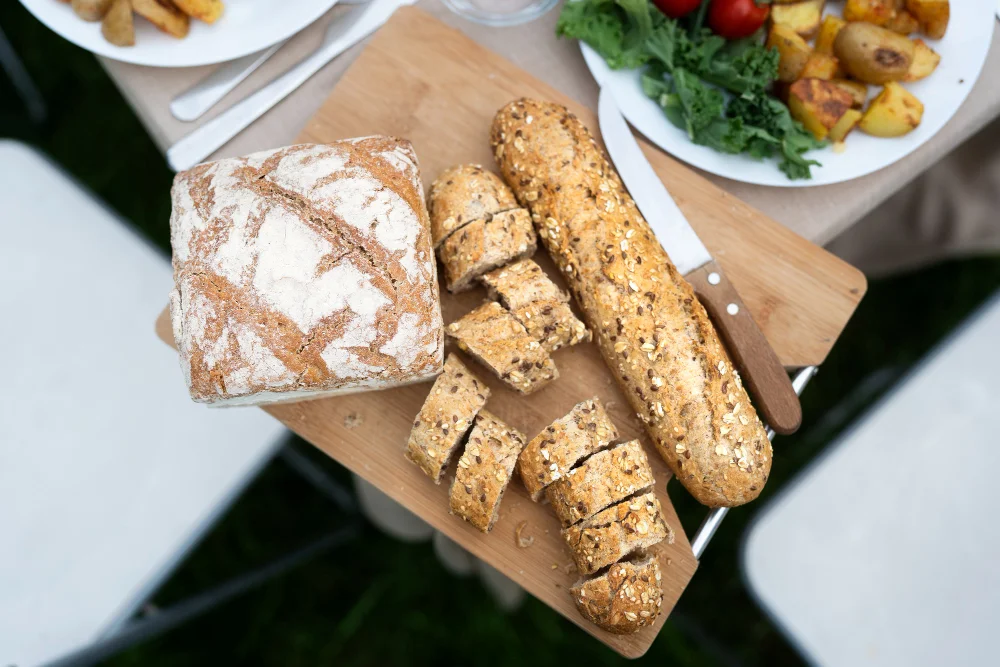
Even the simplest baguette recipe can achieve bakery-quality results with a few expert tips. Using fresh yeast ensures proper fermentation, giving the bread its airy texture and rich flavour. Adding steam to the oven during baking helps develop a golden, crispy crust, while letting the baguettes cool completely before slicing preserves their soft interior and structure.
Paying attention to these small but important details can elevate your homemade baguettes, making them visually appealing and delicious, with a perfect balance of crust and crumb every time.
Essential Tips for Home Baking
-
Fresh Yeast: Always use fresh, active yeast to ensure proper dough rising and flavor development.
-
Steam in Oven: Place a tray of water in the oven to create steam for a golden, crispy crust.
-
Cool Before Cutting: Allow the baguettes to cool completely to maintain their structure and soft interior.
-
Proper Kneading: Knead the dough thoroughly to develop gluten for a chewy, elastic texture.
-
Shallow Slashes: Make shallow cuts on top of the dough to allow expansion and an attractive look.
Benefits of Making Baguettes at Home: Easy Baguette Recipe
Making baguettes at home offers several benefits beyond just enjoying fresh bread. Homemade baguettes are free from preservatives and artificial ingredients, allowing you to control the quality of what you eat. Baking at home also gives you the flexibility to experiment with flavors, such as adding herbs or seeds, and ensures that your bread is always warm and fresh.
Additionally, the process of baking can be therapeutic, offering a creative outlet and a sense of accomplishment when you pull a golden, crispy baguette out of the oven.
Healthier Ingredients
Baking your own baguette allows you to choose high-quality ingredients that are healthier than store-bought options. You can select organic flour, natural yeast, and control the salt content, which is beneficial for reducing additives and sodium intake.
Homemade baguettes also avoid preservatives and artificial enhancers commonly found in commercial bread. This ensures you are consuming a more natural product, which can be better for digestion and overall health.
Freshness and Flavor
Home-baked baguettes are unmatched in flavor and freshness. Unlike store-bought bread, which may sit on shelves for days, your homemade loaf is ready to eat immediately after baking, providing a crisp crust and soft, airy interior.
The freshness enhances taste and aroma, making every bite more enjoyable. You can also adjust baking time and temperature to get your preferred crustiness or softness, which is not possible with pre-packaged bread.
Cost-Effective
Making baguettes at home is surprisingly economical. The basic ingredients flour, water, yeast, and salt are inexpensive, and you can produce multiple loaves at the cost of a single store-bought baguette.
This makes baking at home a budget-friendly option, especially if you consume bread regularly. Over time, it can save a significant amount of money while providing superior taste and quality.
Creativity and Customization
Baking your own baguette opens opportunities for creativity and customization. You can experiment by adding seeds, herbs, or whole grains to create unique flavors and textures.
Customization also allows you to cater to dietary preferences or restrictions, such as using whole wheat flour or gluten-free alternatives. This creative control ensures each loaf meets your personal taste and nutritional goals.
Satisfaction and Accomplishment
There is a special sense of satisfaction that comes from baking bread from scratch. Watching your dough rise and then transform into a golden, crusty baguette gives a tangible sense of accomplishment.
This process can be both relaxing and rewarding. It encourages mindfulness and patience, making baking not just about food but also about personal well-being and enjoyment.
Ways to Serve Baguettes: Easy Baguette Recipe
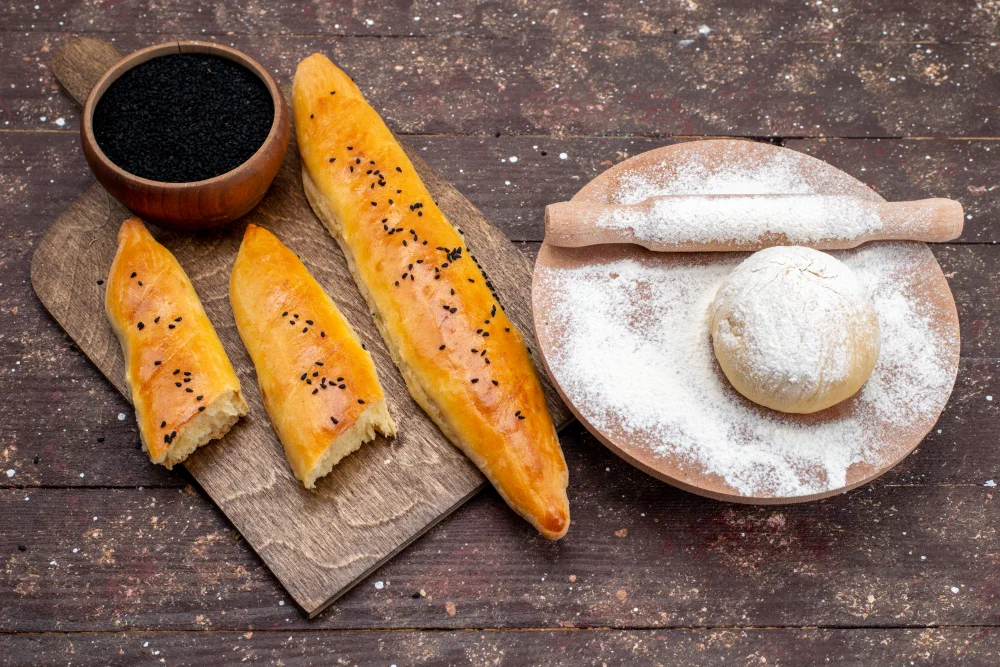
Baguettes are incredibly versatile and can be enjoyed in numerous ways, making them a staple in many meals. Their crispy crust and soft interior allow them to pair perfectly with a variety of dishes. You can enjoy them as a simple snack, use them to make hearty sandwiches with fillings like Turkey Pepperoni, or accompany soups and stews.
Beyond that, baguettes can be transformed into delicious appetizers or side dishes, such as bruschetta, garlic bread, or crunchy croutons, offering endless possibilities for enhancing your meals.
Popular Serving Ideas
-
Sandwiches: Slice the baguette lengthwise and fill with your favourite meats, cheeses, and fresh vegetables for a satisfying meal.
-
With Soups: Tear into chunks and dip into soups or stews to soak up flavours while enjoying a crisp bite.
-
With Butter: Spread butter on warm slices for a quick, comforting snack.
-
Garlic Bread: Slice and add garlic butter, then bake for a fragrant side dish.
-
Bruschetta: Top with tomatoes, basil, and olive oil for a fresh appetiser.
-
Croutons: Cube and toast baguette pieces to add crunch to salads and soups.
Conclusion: Easy Baguette Recipe
Baking your own baguette at home is both rewarding and enjoyable. This easy baguette recipe allows you to create fresh, golden, and crispy French bread without leaving your kitchen. By using simple ingredients and following the step-by-step instructions, you can achieve a soft interior and a crunchy crust that rivals bakery-quality baguettes. The process also gives you full control over ingredients, making your bread healthier and customizable to your taste.
Beyond taste and texture, homemade baguettes bring a sense of accomplishment and creativity to your cooking routine. They are versatile, perfect for sandwiches, soups, or simply with butter, and can be transformed into garlic bread, bruschetta, or croutons. Whether for everyday meals or special occasions, baking baguettes at home adds both flavor and joy to your table, making every bite a delightful experience.

